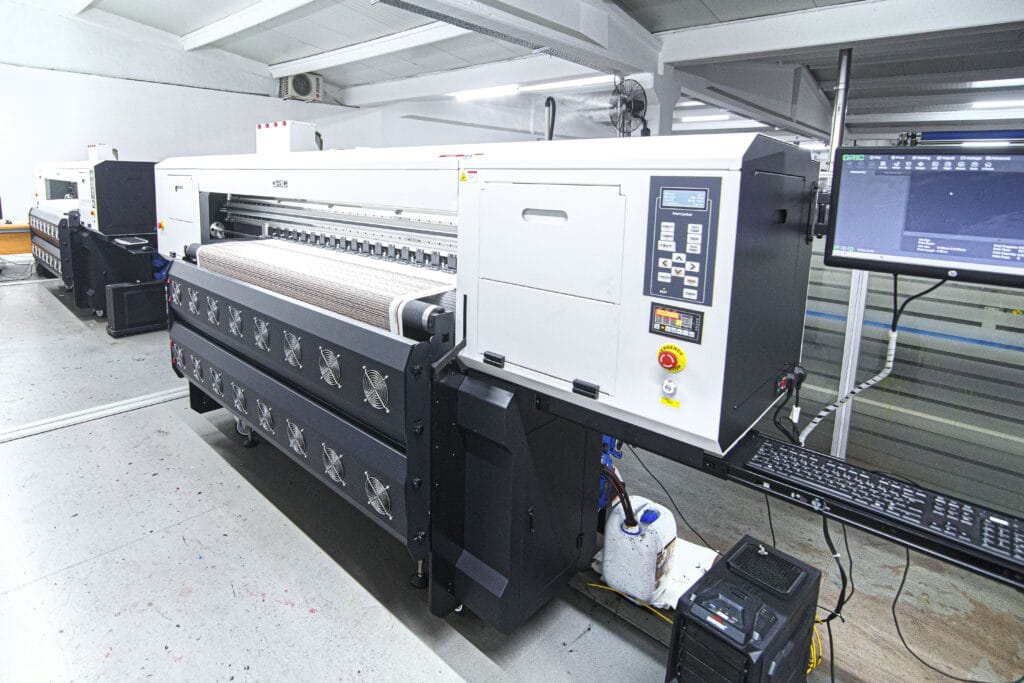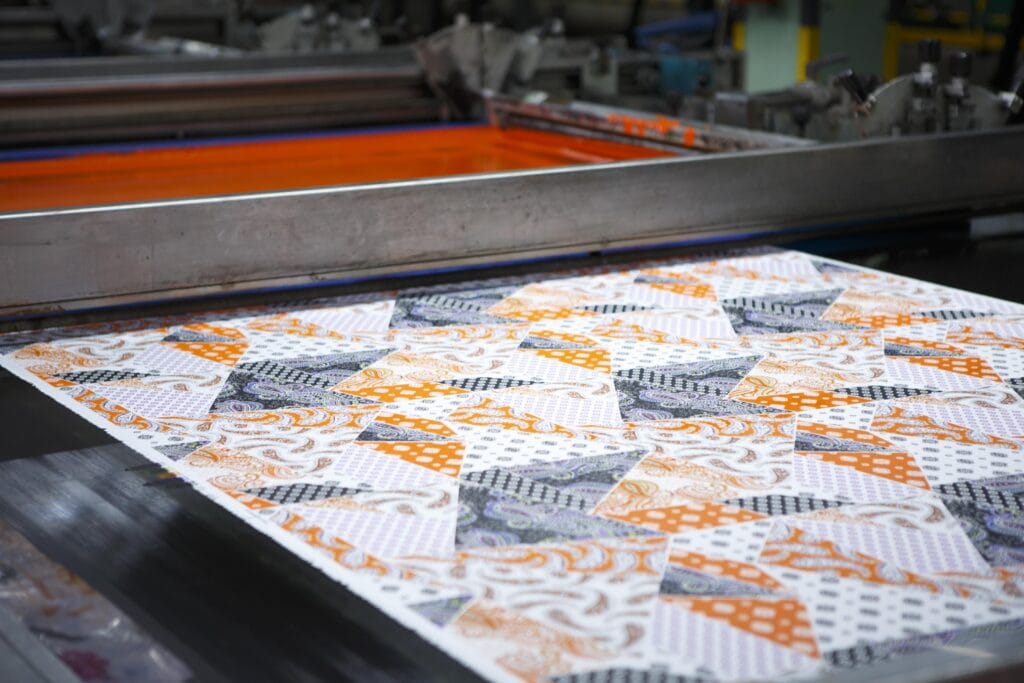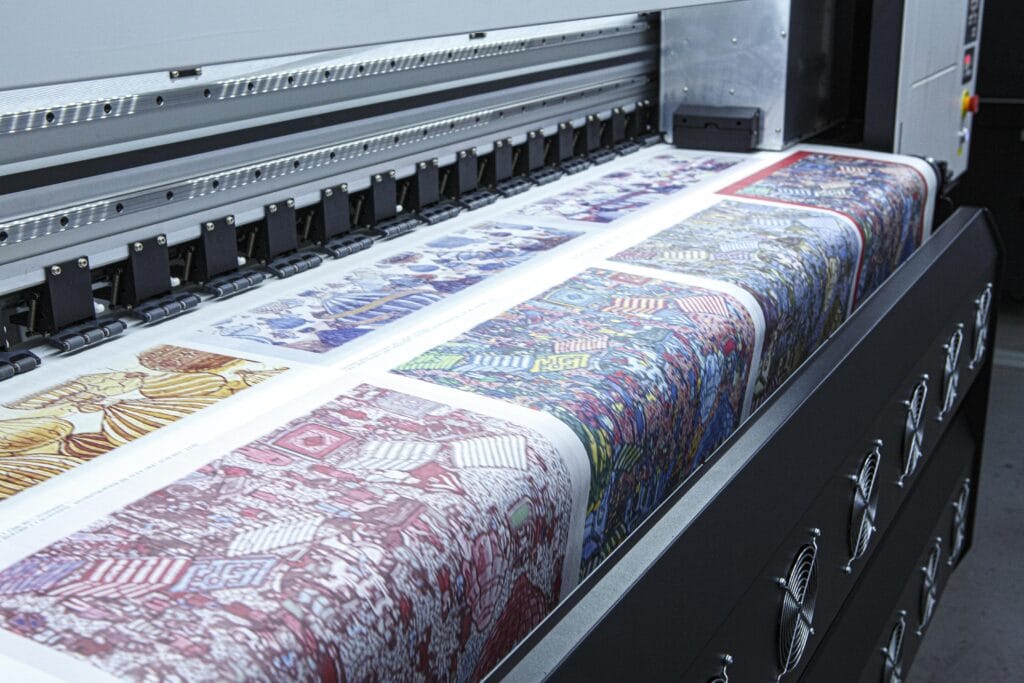Prıntıng
Disperse Direct Digital Printing
Digital printing has always been Akel’s forte. Akel is one of the few companies in the world which brings together a variety of digital printing options on any fabric.
In direct disperse printing, you can print the ink directly onto the fabric. After the ink has been printed onto the fabric, the fabric goes through the dryer to ensure that the water is taken out and the dye stays on the fabric.
Benefits
In Disperse Direct Digital Printing, polyester and polyester blended fabrics are printed directly.
- The texture of the fabrics does not deteriorate during printing and does not lose its finish.
- It penetrates into the fibers and eliminates the issue of yarn spinning.
- It provides a higher quality polyester digital printing.
- Provides greater fastnesses as per industry standards.

Sublimation Paper Printing
Sublimation Paper Printing is the most preferred method of sublimation printing. In this kind of printing, you print the design on the paper, place the paper onto the fabric and feed it through a calendar. In the calendar, the paper and the fabric are heated and pressed in between two large rolls. The high pressure and the temperature cause the ink to go instantly from solid to a gaseous state, which is then absorbed by the fabric. As soon as the fabric comes out of the machine, the gas coagulates into the fibre.
Benefits
- No steamer or washing machine is required for sublimation printing.
- This technique is less environmentally damaging, easier, and cost-effective than other printing methods.
- It can be done on a digital printing machine, which means large quantities can be printed faster.
- Your printer does not need to have a thermoplastic layer since it only has to transport paper. Any basic printer is capable of performing this kind of printing – resulting in lower investment in capital.

Reactive Digital Printing
The reactive digital printing process works by permanently locking colour into a fabric. Reactive Digital Printing is a very flexible way of printing as inks used in the process enable you to print on natural fibers, most importantly cotton. Reactive inks can also be used in printing on silk, wool or viscose, modal floss, and similar blended, woven, and knitted fabrics without the restriction of molds.
Benefits
- High-quality of colors can be produced by reactive inks, especially when printing on cotton or viscose.
- This kind of printing has a high wash fastnesses. This is especially important when it comes to printing for top-level fashion brands, as it means that textiles can be washed frequently without losing its color or texture.
- You can use this process on most natural textiles, specifically natural or protein fibre such as silk, cotton, wool, cashmere, linen, hemp, and so on.
Pigment Digital Printing
Pigment Digital Printing is the newest digital printing technique in the world. It enables printing on all types of fabric with a single type of printing. Using pigment inks is in many cases the most desirable way to print on textiles. Although at Akel, it is currently in the development process, it will be included in mass production as soon as the quality improvements are put in place.
Benefits
- It allows creating unique patterns on a wide assortment of fabrics made of various types of fibre.
- It’s a cost-effective printing technique.
Acid Digital Printing
It is a type of printing that can print on the world’s most valuable fibers, such as nylon cashmere. The top-end fashion apparel industry uses acid inks for the printing of delicate silks, soft cashmere, and colorful sports and swimwear because of their outstanding color brilliance, light speed, and wash speed. While traditional printing processes, such as rotary or flatbed printing, can produce high-quality prints, acid inks are often used in products that require the ink to penetrate through to the backside of materials. Known for their vibrant colors and used specifically in printing wool, nylon, leather, and silk, acid inks are an excellent choice for printing non-color-retentive fabrics.
Benefits
- High color yield & brilliance.
- Excellent wash and light fastness properties.
- Best lnks for the printing of polyamide, silk & other fashionable fabrics.
- Fantastic stability without clogging the print head.
- High color saturation and color-fixing rate.
- Excellent image definition post-processing.

